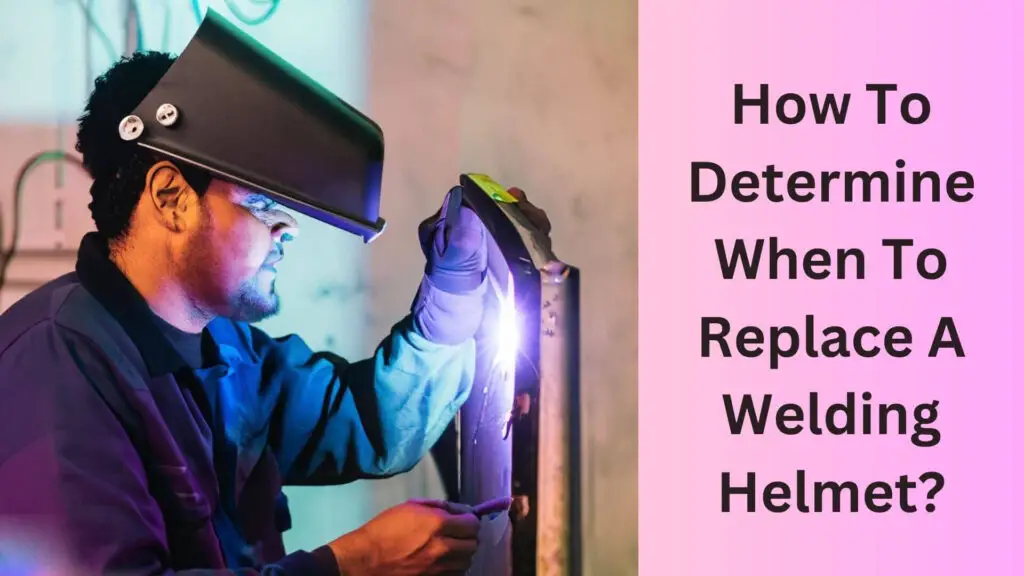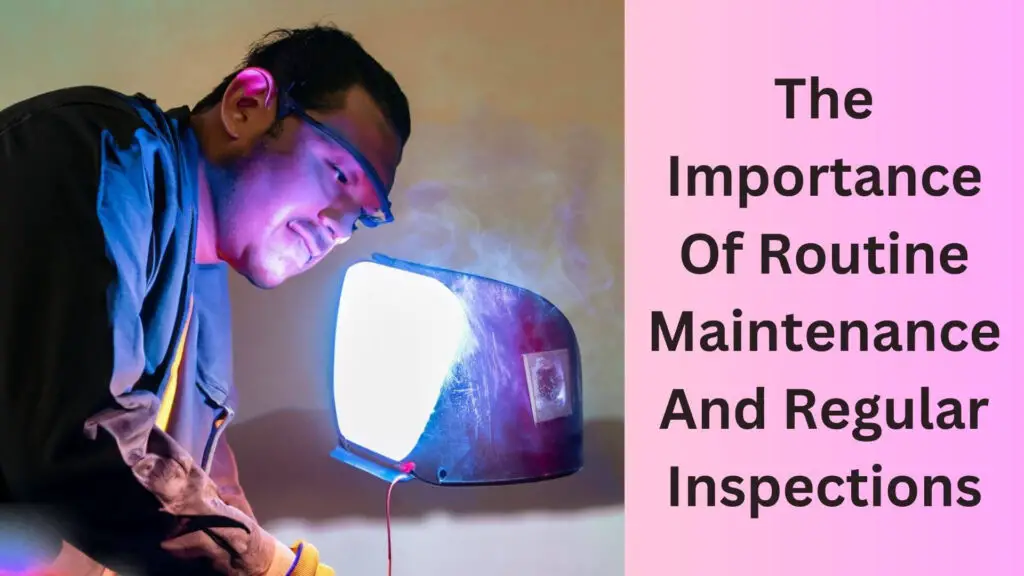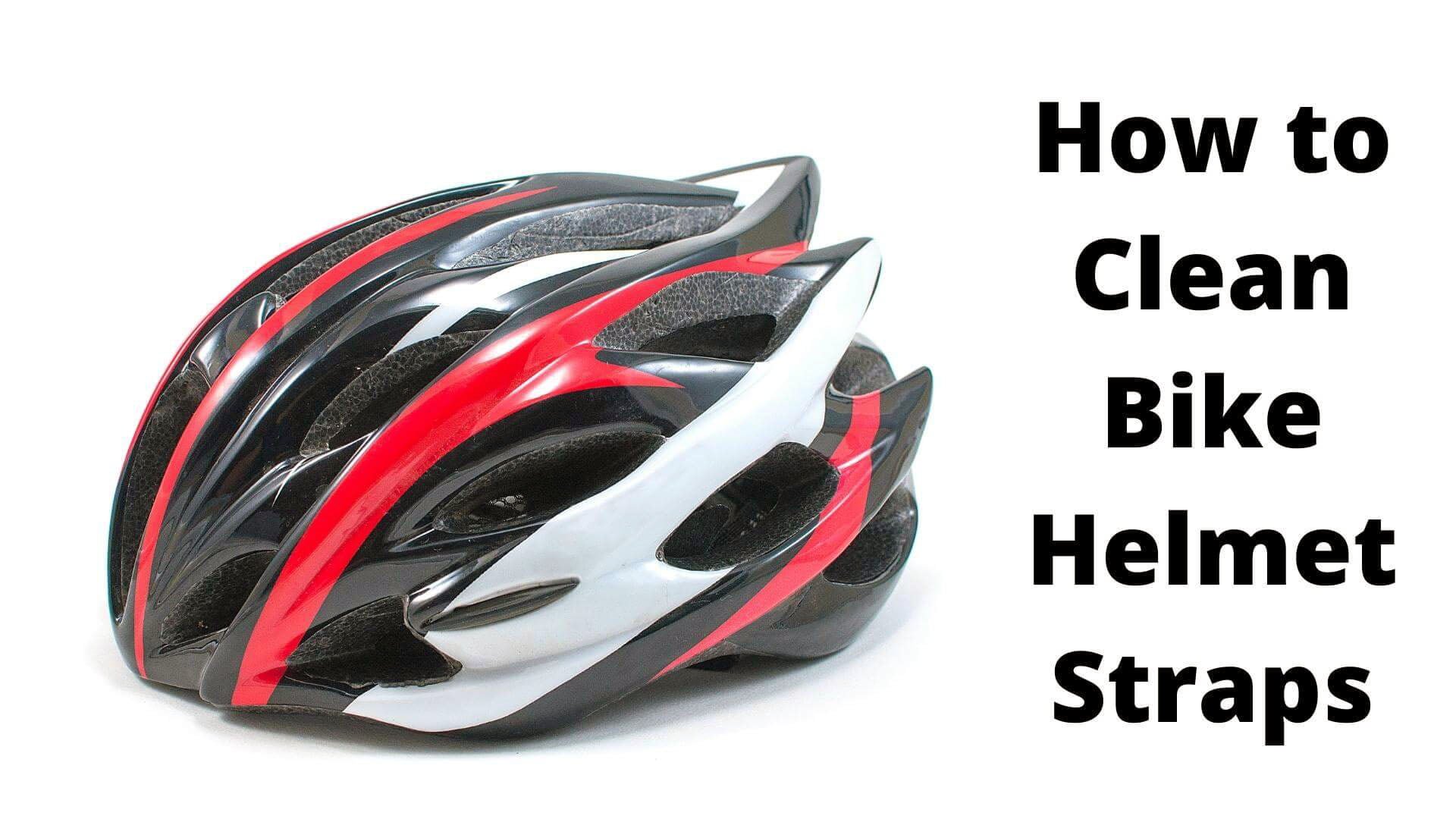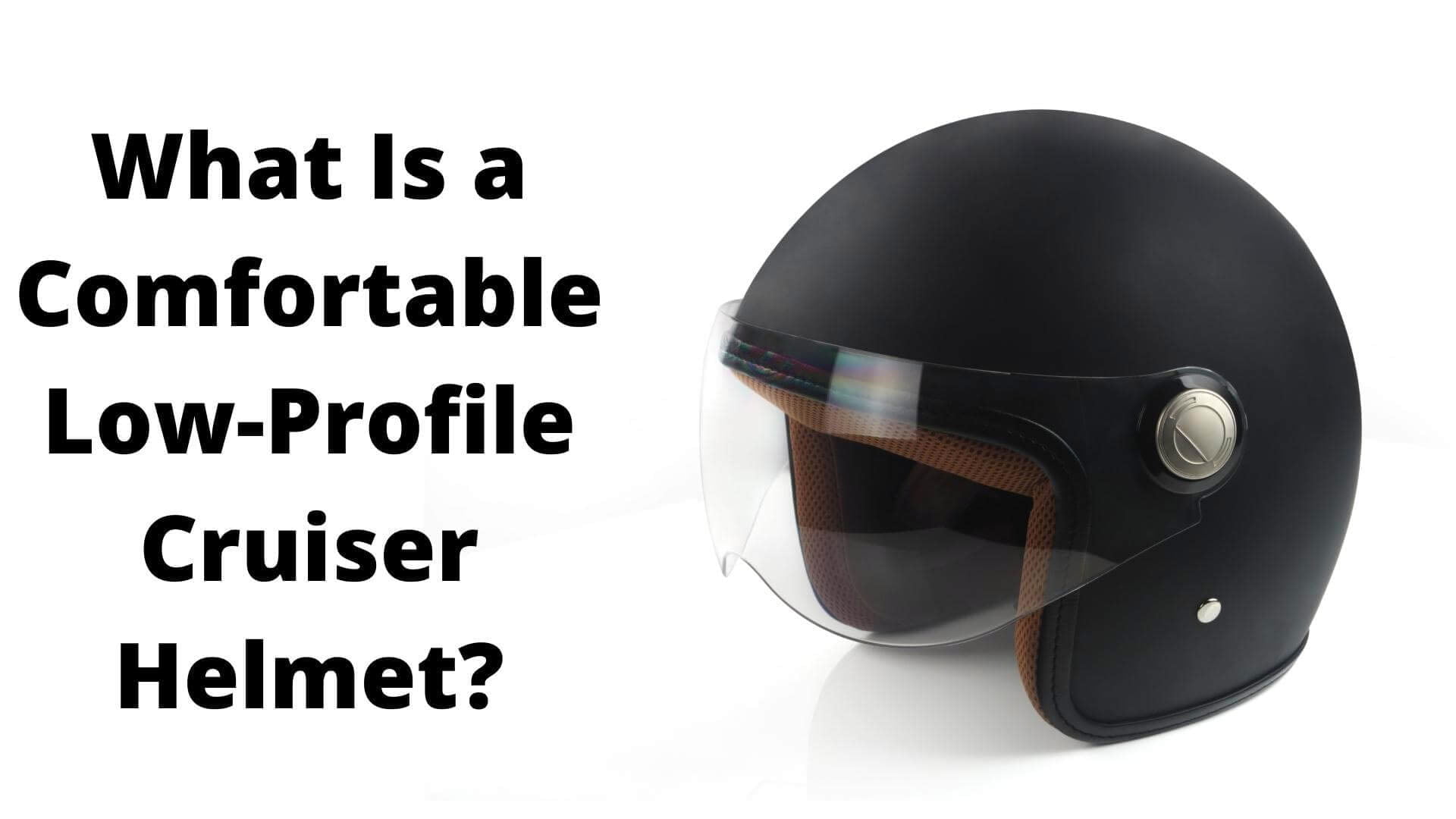How Often Should You Replace a Welding Helmet?

A welding helmet should be replaced every two to three years or more frequently if it has visible damage or does not meet safety standards. Proper maintenance can extend the lifespan of a welding helmet, but it is essential to prioritize safety and replace it when necessary.
Welding helmets are essential components of personal protective equipment for welders. During welding operations, they protect the eyes and face from ultraviolet radiation, infrared radiation, and flying debris.
However, the helmet’s protective properties may deteriorate over time, reducing effectiveness. This can put the welder at risk of eye and face injuries.
Therefore, knowing when to replace a welding helmet ensures maximum protection and safety.
This article will discuss how often you should replace a welding helmet and the signs that indicate it’s time for a replacement.
The Lifespan Of A Welding Helmet
Welding helmets are an indispensable tool for welders that protect them from harmful ultraviolet and infrared rays. This begs the question: how often should you replace a welding helmet?
1. Factors That Can Affect The Lifespan Of A Welding Helmet
- The frequency of use: The more a welding helmet is used, the more likely it is to wear out faster.
- Exposure to sunlight: Ultraviolet rays from the sun can damage the helmet’s lenses, making them less effective.
- Age of the helmet: Over time, helmets can become brittle, compromising their ability to protect against exposure to harmful radiation.
- Storage: It’s essential to store welding helmets in a dry and cool environment away from extreme temperatures and humidity that can affect their lifespan.
2. The Average Lifespan Of A Welding Helmet In Different Work Environments
- Industrial workplaces: The lifespan of a welding helmet in an industrial setting is typically shorter as they are used more frequently and for more extended periods. In this setting, helmets may need to be replaced every 1-2 years.
- Diy projects: Welding helmets used for occasional household projects typically have a longer lifespan and can last 3-5 years.
- Professional welders: Welding helmets used by professional welders who work full-time may need to be replaced more frequently, depending on how often they are used.
Remember that proper maintenance and care of a welding helmet can extend its lifespan and keep it functioning effectively.
Always follow the manufacturer’s guidelines for maintenance and replace any damaged or worn-out parts as soon as possible.
Considering these factors, you can ensure that your welding helmet provides optimal protection for a safe and enjoyable welding experience.
Read More: How Long Should a Welding Helmet Last?
Signs That Your Welding Helmet Needs Replacement
Welding helmets are essential equipment for welders, protecting their eyes from the harmful rays of welding arcs.
However, if your helmet is damaged, it can be hazardous to your eyes and other facial areas. Some common signs indicate it’s time to replace your welding helmet.
- Significant scratches on the screen: Scratches on the helmet’s screen can affect your visibility while welding, which can cause some severe eye injuries.
- Damaged shell or cracks: Any visible damage to the helmet’s shell, such as cracks, dents, or holes, can compromise its safety and structure. It can shatter if something hits it, and pieces can fly into your face.
- Deteriorating parts: Worn-out parts, such as hinges, headgear, and straps, can cause discomfort and reduce helmet stability. This could affect your overall welding performance.
- Faded screen: The auto-darkening screen should be able to change quickly from light to dark when you are welding to prevent you from getting blinded. However, a screen that has become faded can affect the speed of reactions.
Identifying these signs early is essential, as they can prevent serious eye injuries and other hazards.
Importance Of Identifying Signs Early To Prevent Eye Injuries And Other Hazards
Welding helmets are designed explicitly to protect the welder’s eyes and face from the harmful UV and IR rays emitted during welding.
Failing to replace a welding helmet on time or using a faulty helmet can lead to severe injuries, which can cause blindness or long-term damage to your eyes.
Moreover, when a welding helmet fails, it can cause other issues, such as flash burns, resulting from short-term exposure to arc welding rays.
A flash burn is painful and can cause temporary blindness. This risk increases if you don’t realize your welding helmet needs to be fixed.
Therefore, it’s crucial to identify the signs of a damaged or faulty welding helmet early to prevent injuries and work with peace of mind.
Replacing your helmet on time will improve your overall welding quality and ensure your eye protection’s effectiveness.
Identifying signs that your welding helmet needs replacement is vital in ensuring a safe and efficient welding experience. Following the tips, you can protect your eyes and other facial skin from injury while welding.
How To Determine When To Replace A Welding Helmet?

Welding helmets are an essential piece of personal protective equipment for any welder. These helmets protect from the harmful ultraviolet and infrared rays produced during welding.
Over time, welding helmets may become damaged, reducing effectiveness and risking the welder’s safety.
1. Various Methods For Determining Whether Your Welding Helmet Needs Replacement
- Visible damage: Check for any visible signs of damage, such as cracks, scratches, dents, or broken parts. Any of these can reduce the helmet’s effectiveness in protecting the welder’s eyes and face.
- Shade adjustment issues: If the shade adjustment on the helmet doesn’t work correctly, the welder’s eyes may not be adequately protected from the welding arc’s bright light. Ensure that the helmet’s shade adjustment mechanisms work correctly.
- Fogged lenses: If the helmet’s lenses become foggy or contaminated, the welder may not be able to see correctly. This can be dangerous during welding, as the welder needs a clear view of the welding area. Replace the lens if it becomes foggy or contaminated.
- Overexposure: If a welder has experienced overexposure to the welding arc’s bright light, it can cause temporary or permanent damage to the eyes. It may indicate overexposure if you feel a burning or gritty feeling in your eyes after welding. Consult a medical professional immediately and replace your helmet.
2. The Importance Of Routine Maintenance And Regular Inspections

Regular inspections and maintenance of your welding helmet can ensure it functions correctly and increases lifespan. A few maintenance tips include:
- Clean your helmet regularly: Use a soft cloth to clean your helmet’s lenses and shell. Do not use solvents or abrasive materials to clean your helmet, as this can cause damage to the lenses and shell.
- Check for loose parts: Check for loose parts or screws in the helmet and tighten them if necessary. Loose parts can not only reduce the helmet’s effectiveness but can also be hazardous during welding.
- Replace parts as needed: Replace any parts that show signs of wear or damage, such as the lens, headgear, or shell.
- Store your helmet correctly: Store your helmet in a dry, cool place, away from direct sunlight, moisture, and heat sources. Storing it correctly can increase its lifespan and prevent damage.
Regular maintenance and inspections are essential to ensure that your welding helmet performs correctly and that you remain protected while welding.
It is crucial to replace your welding helmet when it shows visible signs of damage, the shade adjustment isn’t working correctly, the lenses are foggy, or you have experienced overexposure.
Additionally, routine maintenance, inspections, and proper storage can increase the lifespan of your welding helmet, ultimately keeping you safer during welding.
Read More: Perfectly Use of a Welding Helmet.
The Cost Of Replacing Welding Helmets
Regarding welding safety, the importance of a welding helmet cannot be overstated. It protects your eyes and faces from welding arc radiation, sparks, and hot metal debris.
However, welding helmets can endure wear and tear like other safety equipment and eventually require replacement.
But how often should you replace a welding helmet, and what are the costs?
Here, I’ll explore the factors affecting the cost of replacing welding helmets and compare that to the potential cost of sustaining a welding injury.
1. Factors That Can Affect The Cost Of Welding Helmets
Several factors can affect the cost of a welding helmet, such as:
- Type of welding helmet: There are different welding helmets, including passive, auto-darkening, and flip-up. Auto-darkening helmets tend to be more expensive compared to passive and flip-up helmets.
- Lens quality: Welding helmets with high-quality lenses tend to be more expensive. In contrast, lower-quality lenses provide insufficient protection and may lead to impaired vision or injury.
- Brand: Popular and established brands offer higher-priced helmets than less well-known ones.
- Additional features: Helmets with additional features such as adjustable headgear, large viewing areas or better adjustability tend to cost more.
2. Comparison Of The Cost Of Replacement Versus The Cost Of A Potential Injury
It may be tempting to keep using your welding helmet for longer than necessary to avoid the cost of replacement, but this may result in severe consequences when considering the cost of sustaining a welding injury.
Here is a comparison of the cost of replacement versus the cost of a potential injury:
- Cost of replacement: While replacing a welding helmet can vary depending on the factors mentioned earlier, the average cost ranges between $50 to $300.
- Cost of an injury: A welding injury could be substantial and range from medical bills and lost wages to permanent disability or even death. Moreover, the emotional toll on the individual and their family is incalculable. Therefore, it’s crucial to prioritize your safety and invest in a good-quality welding helmet to avoid expensive and traumatic consequences.
Your safety is paramount; consequently, it’s recommended to replace your welding helmet every two to three years or as soon as wear and tear become noticeable. The potential cost of sustaining a welding injury far outweighs replacing a damaged helmet.
Pros And Cons To Replace A Welding Helmet
| Pros | Cons |
| Improved Visibility | Potential for Eye Strain |
| Enhanced Comfort | Cost of New Helmet |
| Increased Safety | Learning Curve for New Technology |
| Better Fit and Adjustment | Compatibility with Existing Gear |
| Advanced Features and Technology | Potential Compatibility Issues |
| Reduction in Neck Strain | Maintenance and Upkeep |
| Lighter Weight | Possible Dependence on Power Source |
| Potential for Customization | Limited Options in the Market |
Please note that the table is provided for illustrative purposes only, and the specific pros and cons may vary based on the different replacement welding helmets available.
Frequently Asked Questions For How Often Should You Replace A Welding Helmet
How Often Should You Replace A Welding Helmet?
Welding helmets should be replaced every 2 to 3 years, depending on usage and condition.
What Happens If You Don’t Replace Your Welding Helmet?
If not replaced, the helmet may fail to protect the welder’s eyes and face.
How To Know When To Replace Your Welding Helmet?
The helmet must be replaced if there are signs of wear and tear, cracks, or scratches.
Can I Use An Old Welding Helmet For A New Project?
Old welding helmets may need more protection to keep you safe.
What Are The Factors That Affect Welding Helmet Life?
Factors that can affect the life of the welding helmet are sunlight, temperature, and humidity.
Final Word
Based on our research, it is highly recommended that welding helmets should be replaced every two to three years.
However, this time frame can vary depending on the model, frequency of use, and other factors. While it’s possible to prolong the lifespan of your welding helmet, it’s essential not to compromise your safety.
Welding helmets that have suffered discoloration, cracks, or other damage should be replaced immediately. Investing in a high-quality welding helmet protects you from the job’s intense light, heat, and radiation. Remember to check the manufacturer’s instructions and guidelines for replacement and prioritize your safety.
With proper care and regular inspections, you can ensure that your welding helmet serves you well and keeps you safe while on the job.

Hey, I’m Hrithik Hossain. I am the head of helmethacks.com, which specializes in safety helmets. I am looking to connect with anyone interested in purchasing a helmet or who has any questions about different types of helmets. I have over 8 years of experience as a helmet expert, and I can’t wait to help you find the perfect helmet for you. I can help you with any questions regarding helmets, from the best brands to fitting, style, and more! I really enjoy keeping people safe by ensuring they have the best protection possible.







